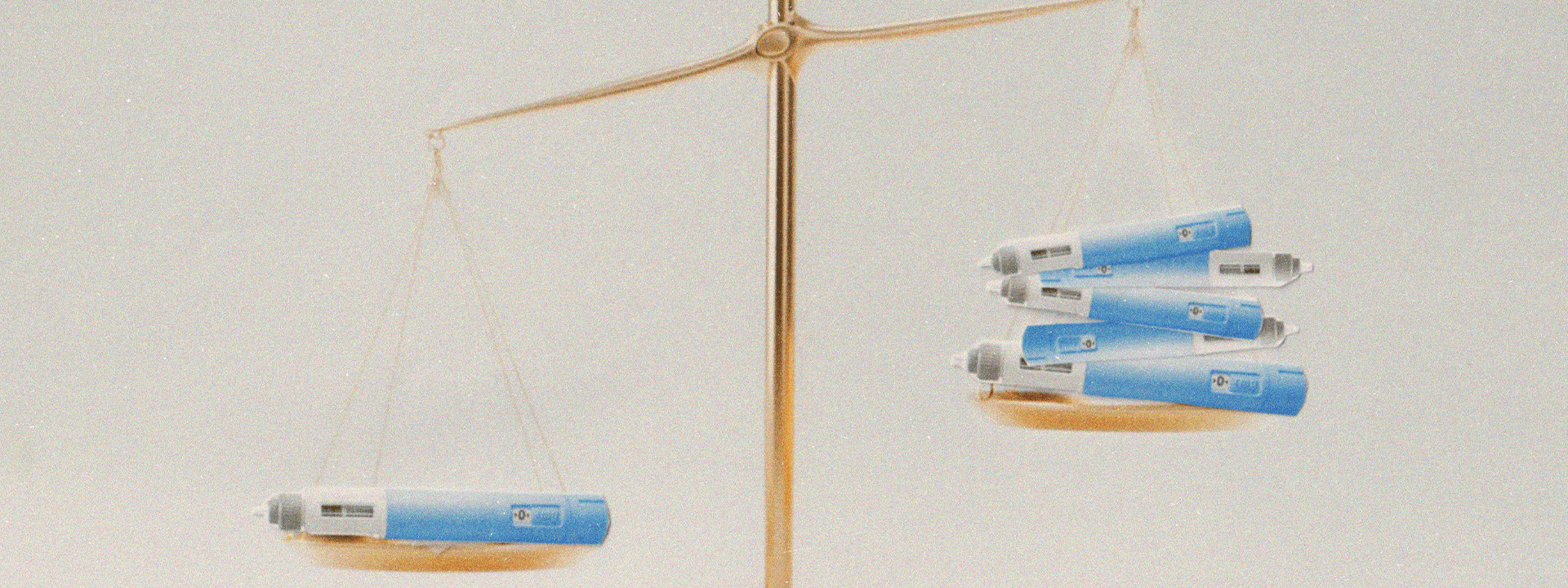What was once a quiet admission—”I’m on Ozempic”—has now become a loud conversation. Celebrities such as Serena Williams, Oprah, and Kelly Clarkson are using injectable medications like Ozempic, Zepbound, or Mounjaro. These are synthetic versions of the GLP-1 hormone our bodies produce, and they often lead to weight loss.
“GLP-1 stands for glucagon-like peptide-1, a hormone made in our gut after eating,” explains Rocio Salas-Whalen, a board-certified doctor specializing in obesity and hormone-related medicine. About 90% of her patients are currently using some form of this medication, which inspired her to write the upcoming book Weightless, set for release in December. “This hormone’s main job is to regulate blood sugar, but it also helps us feel full, reduces cravings, and slows digestion. We have receptors for it all over our bodies. Medications like Ozempic and Zepbound are long-acting versions of this hormone and have the same effects.”
Last year, one in eight Americans said they had tried one of these drugs, usually prescribed for diabetes or obesity, because of the weight-loss side effect. However, along with shedding pounds, some users have experienced hair loss, facial sagging (dubbed “Ozempic face”), and concerns about questionable imitations. The latest trend? Microdosing. Andy Cohen, host of Watch What Happens Live, recently shared on his radio show that he’s been doing it.
“After 20 years of asking others about their health routines and being open about my own diets, it would be hypocritical not to share,” Cohen says. “This summer, I lost a significant amount of weight by microdosing a GLP-1.” The father of two was unhappy with his weight, but health issues like artery plaque and high blood pressure also influenced his decision.
“Microdosing a GLP-1 means taking a dose smaller than the FDA-approved therapeutic amount,” says Dr. Salas-Whalen. Dave Asprey, founder of Bulletproof Coffee and a well-known figure in the wellness world (sometimes compared to Gwyneth Paltrow), believes microdosing is a trend he hopes fades. Asprey started his weight-loss journey in 1995 at 300 pounds, using then-experimental methods like MCT oil since GLP-1 drugs weren’t available then.
“We’re all focused on GLP-1s right now because they show quick results, and we love a fast solution,” Asprey notes. “For someone severely obese, it can be a game-changer. But the downside is that you often lose muscle along with fat—and not just a little. Scientists compare the muscle loss to what happens in severe starvation.” He tried a version of the drug once but felt constantly nauseous and decided it wasn’t for him.
For one anonymous Vogue employee, microdosing Ozempic has been life-changing. “I struggle with binge eating,” she explains. “On a standard dose, people noticed and commented that I looked unwell, saying my head seemed too large. I was also exhausted.” After consulting her doctor, she settled on taking the smallest FDA-approved dose—0.5 ml—every other week instead of weekly.
While she praises her microdosing experience, experts caution that this isn’t how these drugs are intended to be used. “The idea behind microdosing was to avoid side effects by using a smaller dose,” says Dr. Salas-Whalen. “But what does microdosing actually do to the body?”Not much. If you’re aiming to lose weight and manage blood sugar, you should take the therapeutic doses that have been studied and shown to produce the intended effects of the medication. However, she adds a note of caution: “I have seen some patients do well on a very low maintenance dose after reaching their weight loss goal, but this should only be done under the guidance of an experienced healthcare provider.”
Is there a beauty or wellness trend you’re curious about? Let us know! Email Vogue’s senior beauty and wellness editor at beauty@vogue.com.
Frequently Asked Questions
Of course Here is a list of helpful and clear FAQs about the topic Is Everyone Microdosing Ozempic and Youre Not
Beginner Definition Questions
Q What does microdosing Ozempic even mean
A It means taking a very small offlabel dose of the prescription drug Ozempic for purposes other than its intended use primarily for mild weight loss or appetite suppression rather than for treating Type 2 diabetes
Q Is Ozempic the same as Wegovy
A They contain the same active ingredient but are branded and approved for different uses Ozempic is approved for Type 2 diabetes while Wegovy is approved specifically for weight management and is typically prescribed at higher doses
Q Why is this suddenly such a big trend
A Its effectiveness for significant weight loss coupled with celebrity and social media endorsements has driven massive demand and made it a popular though controversial topic
Usage Practical Questions
Q How is microdosing different from a normal dose
A A normal or standard dose is prescribed by a doctor for a specific medical condition Microdosing involves taking a fraction of that dose often without medical supervision to minimize side effects while still trying to get some appetitesuppressing benefits
Q Can I just get a prescription for this
A A legitimate prescription requires a diagnosis like Type 2 diabetes or obesity from a healthcare provider It is not prescribed for casual or microdosing purposes
Q Where are people getting it if its a prescription drug
A Common but risky sources include medical spas online telehealth providers with questionable practices or compounding pharmacies There is also a dangerous black market for counterfeit pens
Risks Problems
Q What are the most common side effects
A Even at microdoses people often experience nausea vomiting diarrhea constipation and stomach pain These can be severe for some
Q What are the serious risks of microdosing Ozempic
A Serious risks include pancreatitis gallbladder issues kidney problems and severe hypoglycemia especially if you are not diabetic and not monitored by a doctor
